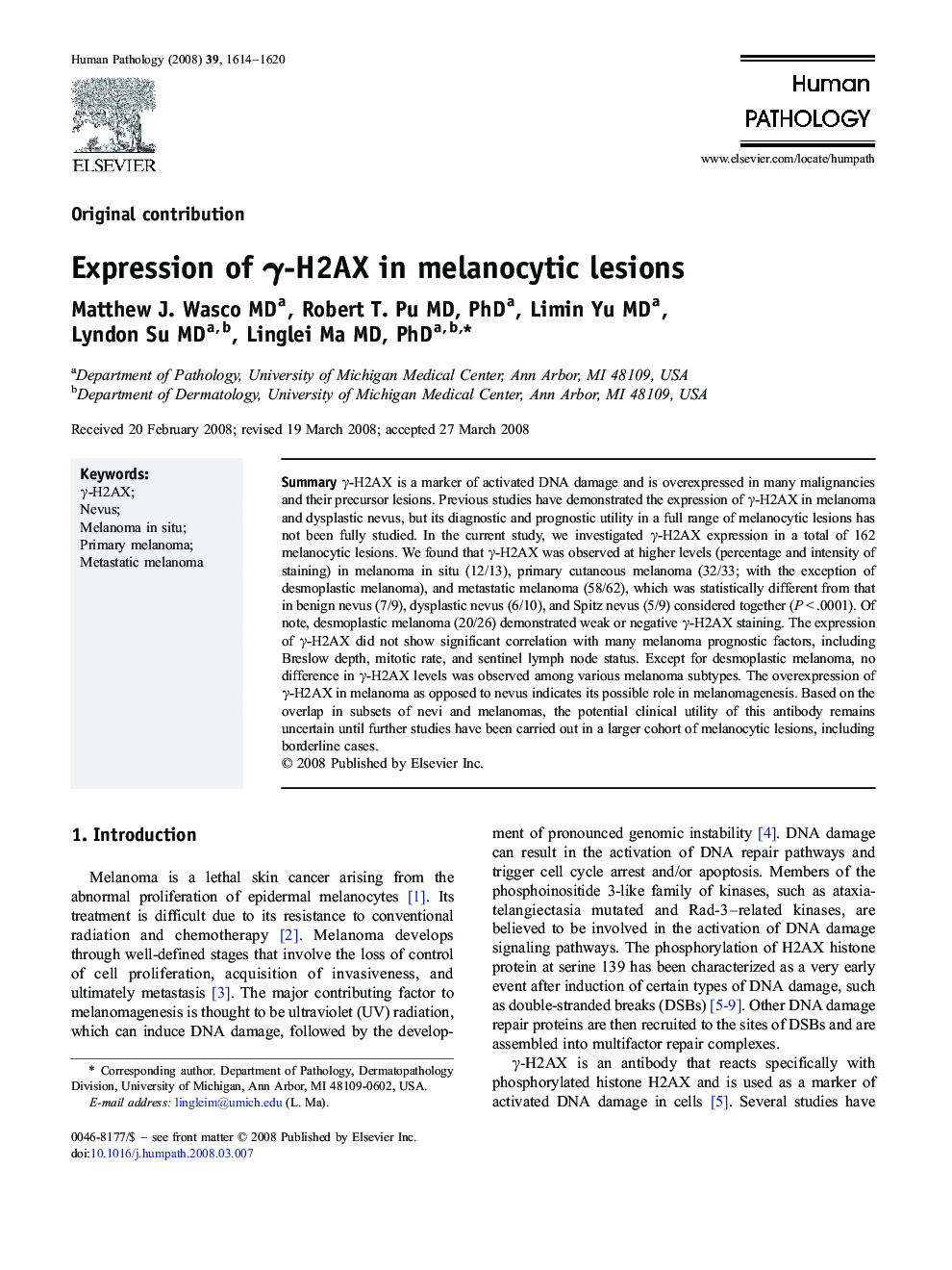| Article ID | Journal | Published Year | Pages | File Type |
|---|---|---|---|---|
| 4135017 | Human Pathology | 2008 | 7 Pages |
Summaryγ-H2AX is a marker of activated DNA damage and is overexpressed in many malignancies and their precursor lesions. Previous studies have demonstrated the expression of γ-H2AX in melanoma and dysplastic nevus, but its diagnostic and prognostic utility in a full range of melanocytic lesions has not been fully studied. In the current study, we investigated γ-H2AX expression in a total of 162 melanocytic lesions. We found that γ-H2AX was observed at higher levels (percentage and intensity of staining) in melanoma in situ (12/13), primary cutaneous melanoma (32/33; with the exception of desmoplastic melanoma), and metastatic melanoma (58/62), which was statistically different from that in benign nevus (7/9), dysplastic nevus (6/10), and Spitz nevus (5/9) considered together (P < .0001). Of note, desmoplastic melanoma (20/26) demonstrated weak or negative γ-H2AX staining. The expression of γ-H2AX did not show significant correlation with many melanoma prognostic factors, including Breslow depth, mitotic rate, and sentinel lymph node status. Except for desmoplastic melanoma, no difference in γ-H2AX levels was observed among various melanoma subtypes. The overexpression of γ-H2AX in melanoma as opposed to nevus indicates its possible role in melanomagenesis. Based on the overlap in subsets of nevi and melanomas, the potential clinical utility of this antibody remains uncertain until further studies have been carried out in a larger cohort of melanocytic lesions, including borderline cases.
